With the Rhône serving as its eastern border and the Loire rising on the slopes of Mont Gerbier de Jonc, the Ardèche is forever linked to two of the largest rivers in France. This is hardly surprising for a region where water plays an essential role. Indeed, despite its sometimes arid landscapes, the Ardèche is crossed by numerous rivers such as the Chassezac, the Eyrieux and, of course, the Ardèche. Whether friends or enemies, water and rock in the Ardèche have created splendid landscapes from their confrontations, which man has embellished with his perched villages. From limestone gorges to green valleys, these are the natural wonders that await you during your camping holiday in the Ardèche.
A LAND OF STONE AND WATER
If you discover the Ardèche from the south, you immediately enter a limestone country where water and time have played the artists to sculpt an open-air museum whose jewel is the Gorges de l’Ardèche. This narrow and deep cut in the Ardèche landscape is indeed one of the most beautiful landscapes in France. After having been subjected to the law of a hard rock subsoil which dictates its course and its gradients from its source to Aubenas, the Ardèche finally takes the upper hand and traces its route through the limestone subsoil of the southern Ardèche. At the level of the gorges, it gives a violent stab in the rock, giving birth at the same time to sumptuous white stone statues with evocative shapes: Autridge rock, Cathedral rock, etc.
Pont d’Arc, gateway to the Ardèche Gorges
The most impressive, and without doubt the most emblematic, work of the water was done at the entrance to the gorges, at Vallon Pont d’Arc. The river and the rock have combined here to dig an arch of colossal dimensions which opens like a door on the Gorges of the Ardèche. It is without doubt the most famous and most visited place in the Ardèche.
There are many ways to visit the Ardèche Gorges. From the tourist road, dotted with lookouts, you can already appreciate the beauty of the limestone cliffs, but it is however from the bottom of the gorges that you can best enjoy the impressive verticality of this exceptional site. And for this, nothing beats a canoe or kayak. The canoe trip has become one of the great classics of any good Ardèche holiday. The number of canoes that frequent the Ardèche flirts with the 100,000 boats per year. At certain times, the Ardèche is reminiscent of a shopping centre on a Saturday afternoon. If you can choose, the months of May and June remain the best time to canoe down the Ardèche. The waters are still high enough and you can avoid the summer rush.
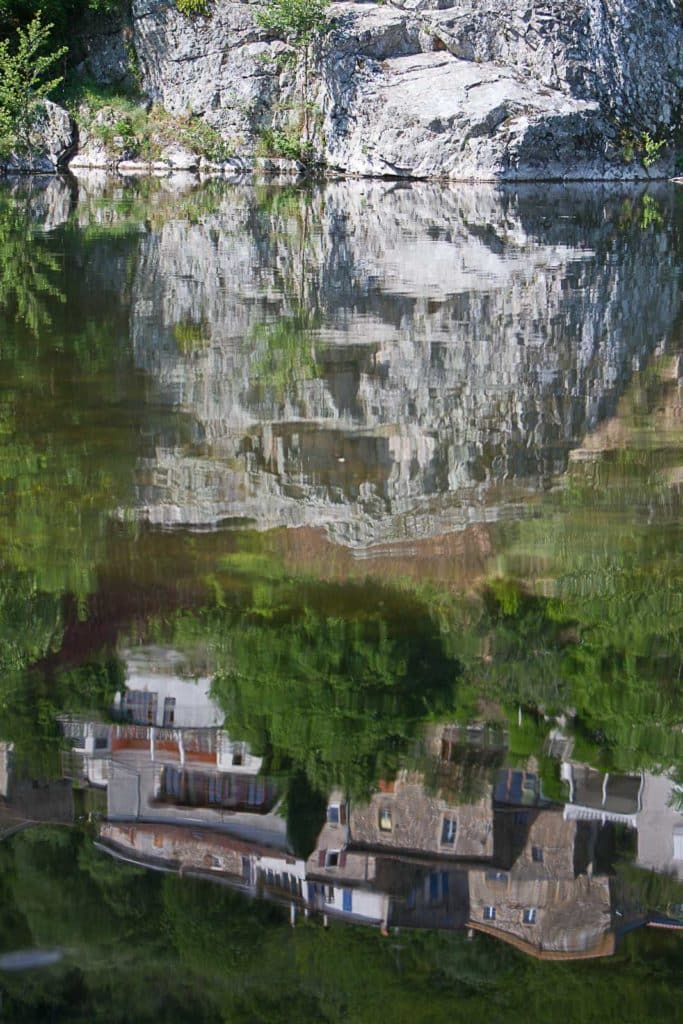
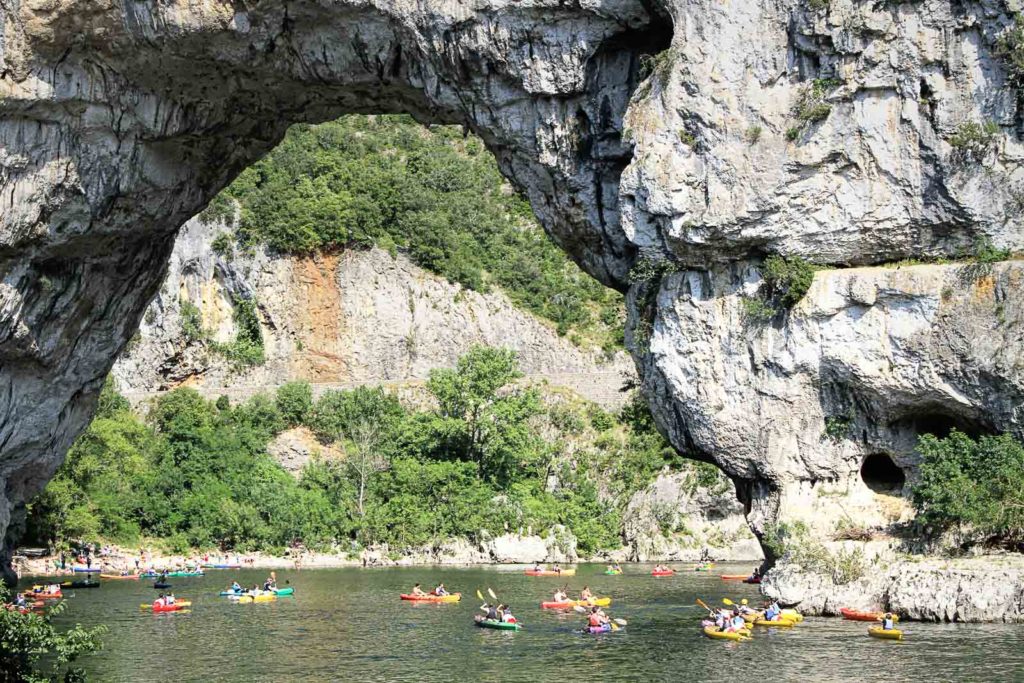
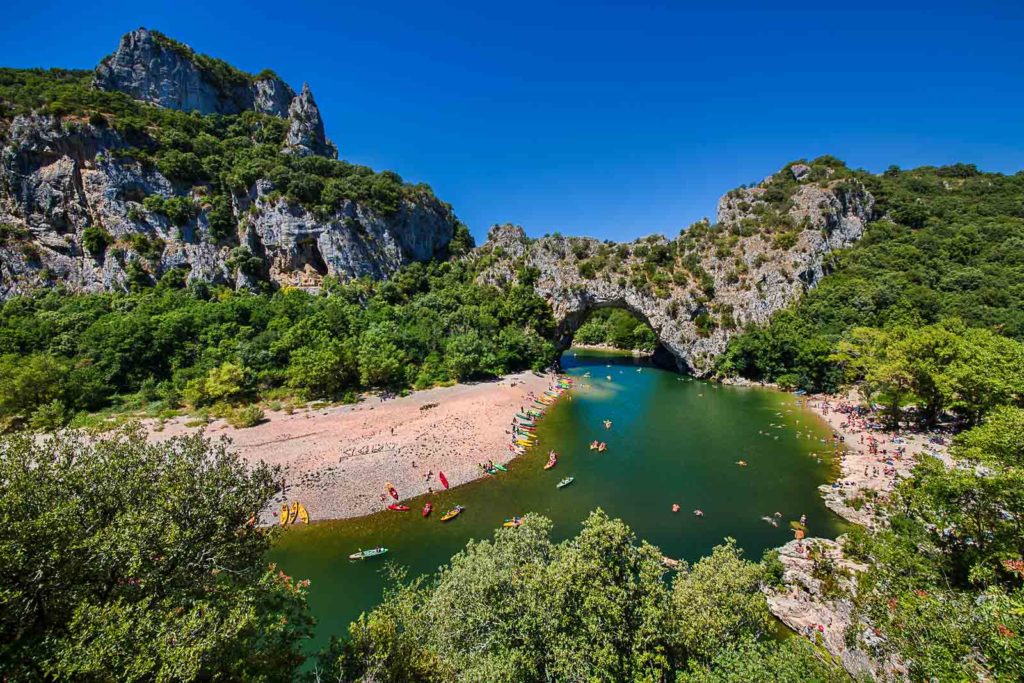
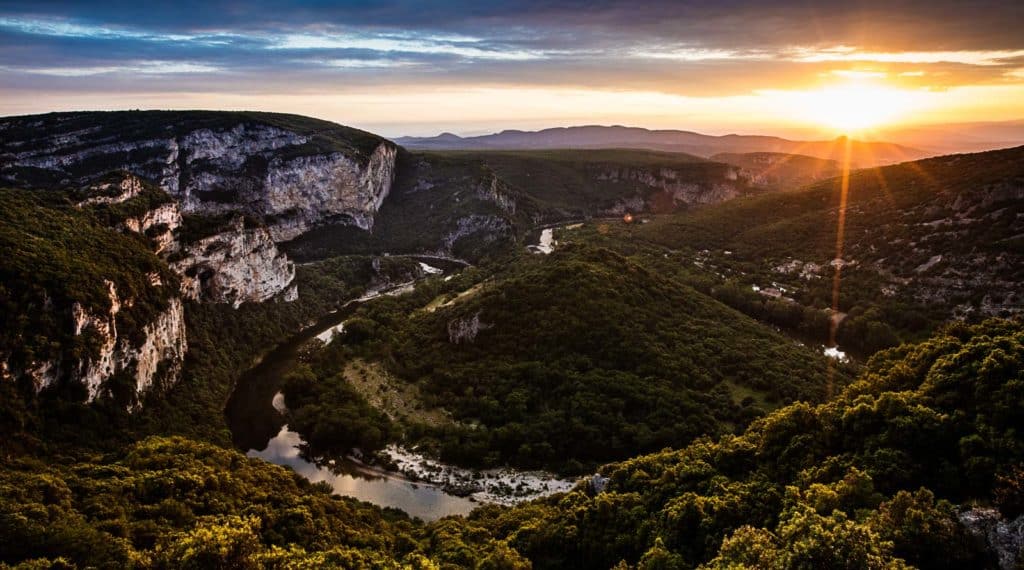
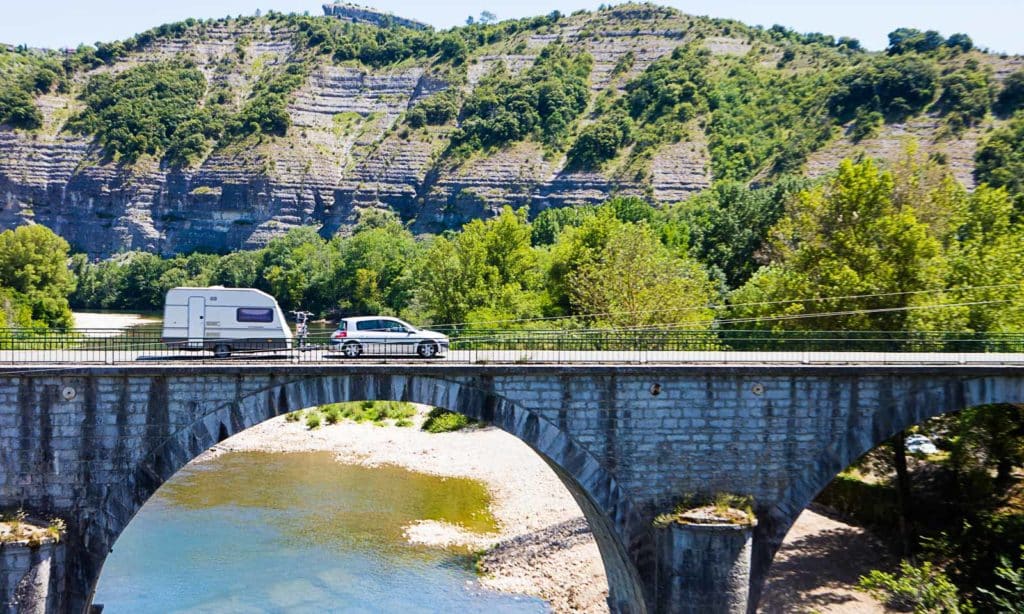
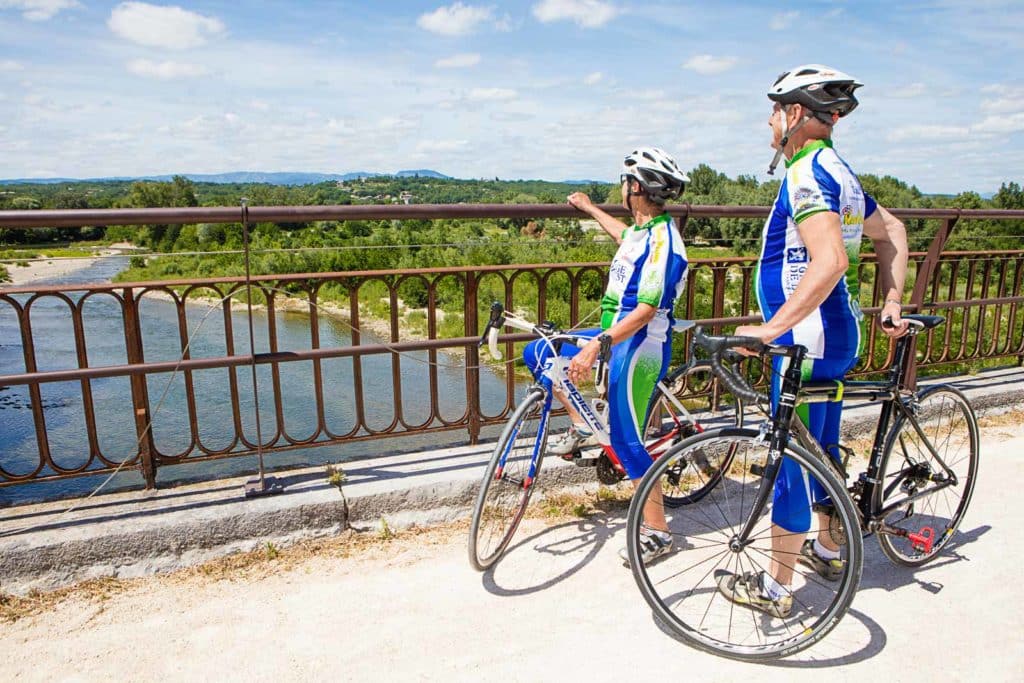
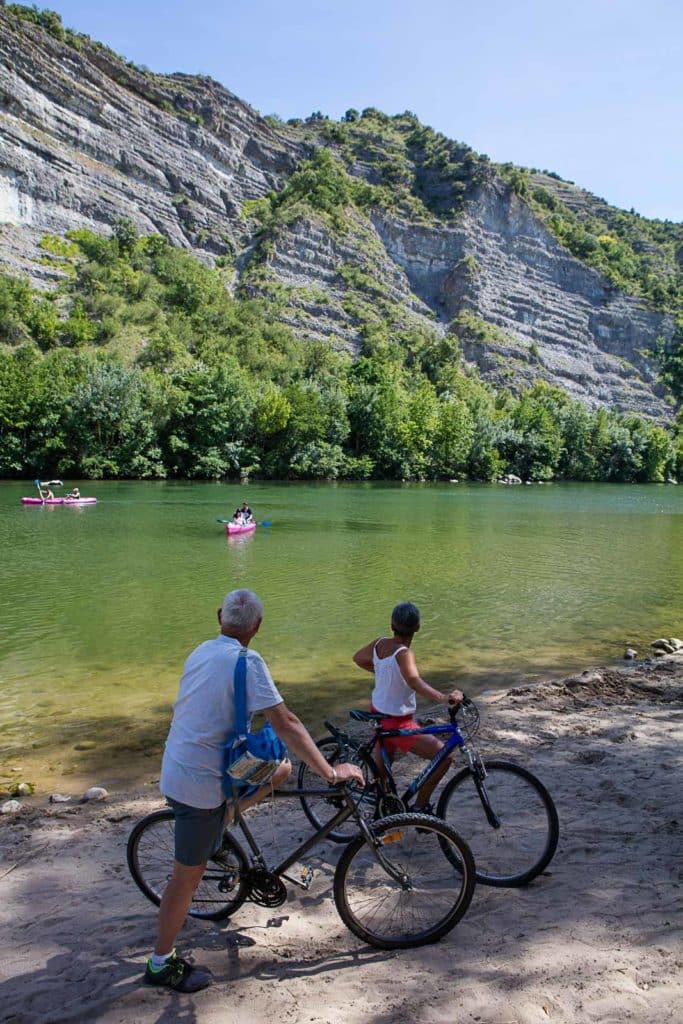
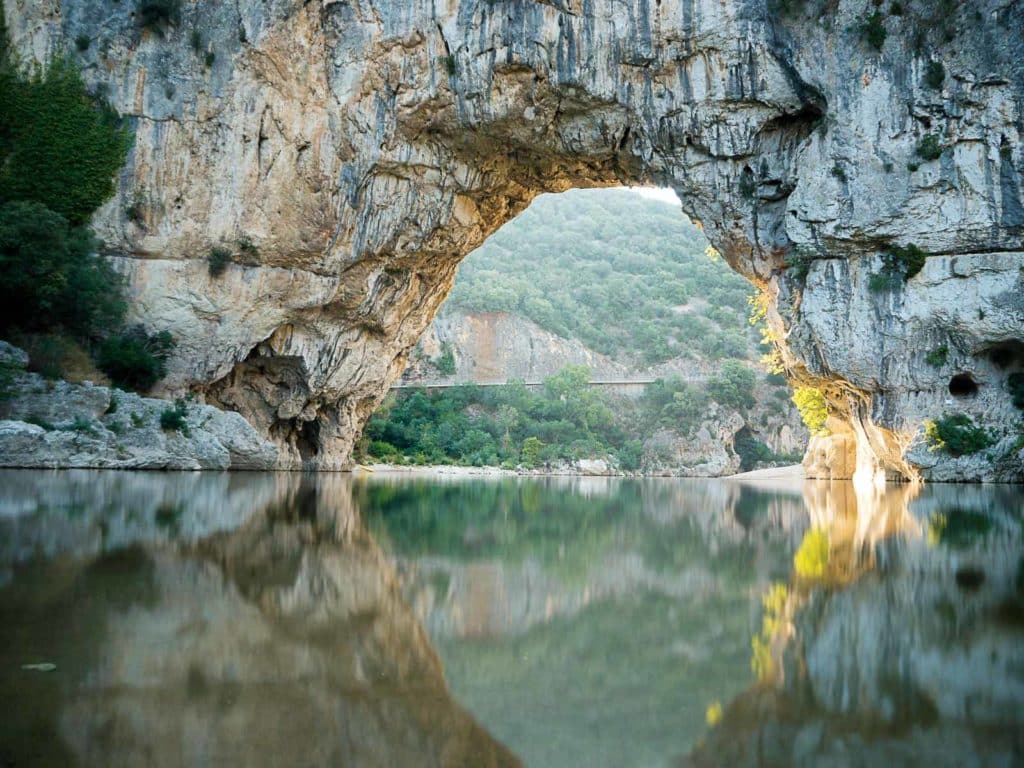
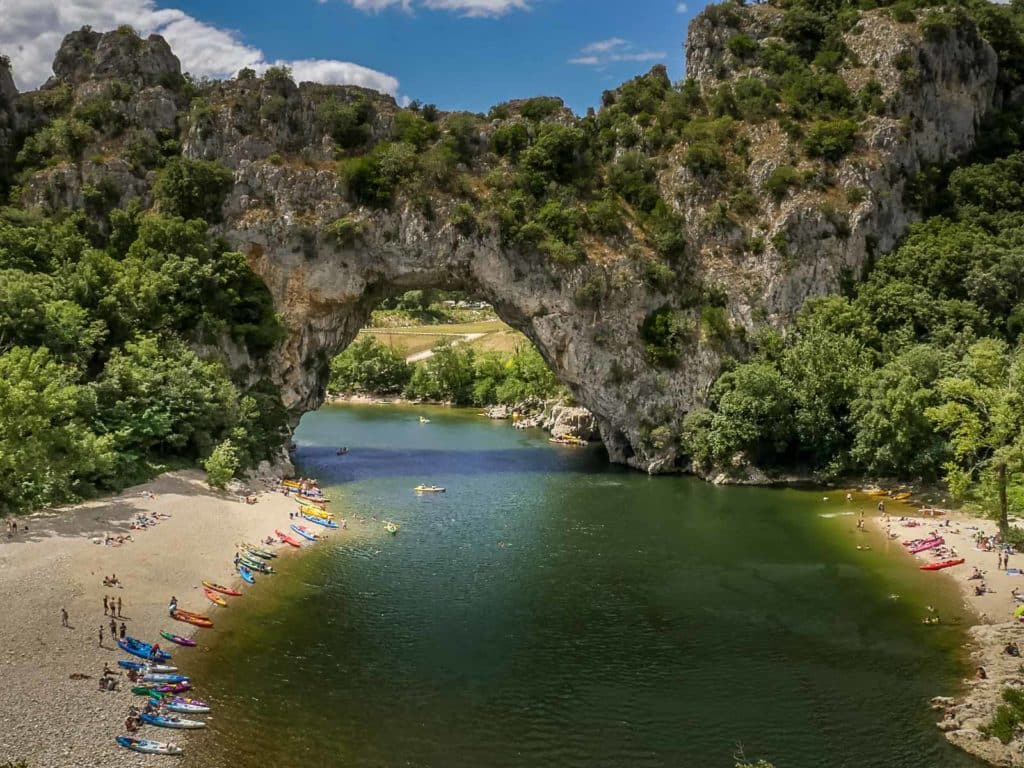
The Chassezac river and the Bois de Païolive
The action of water and time on limestone sometimes has surprising results. For example, the river Chassezac, a tributary of the Ardèche, flows into the mineral landscapes of the Bois de Païolive stone chaos. Here, the unusual shapes of the rock evoke a strange petrified bestiary with a bear, a lion, etc. On its side, the Chassezac draws very beautiful rocky gorges which are reminiscent of the Gorges of the Ardèche. They offer pretty hiking trails that play tightrope walkers at the top of the cliffs.
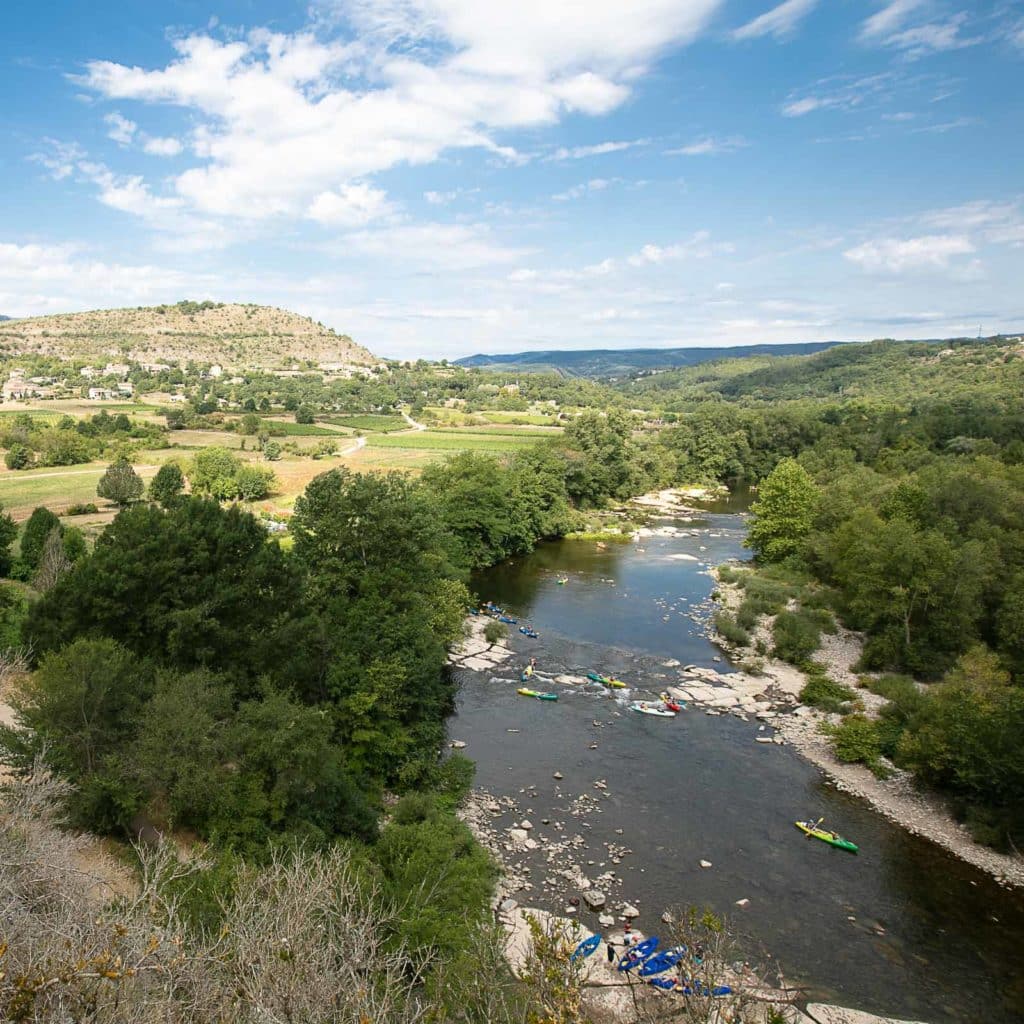
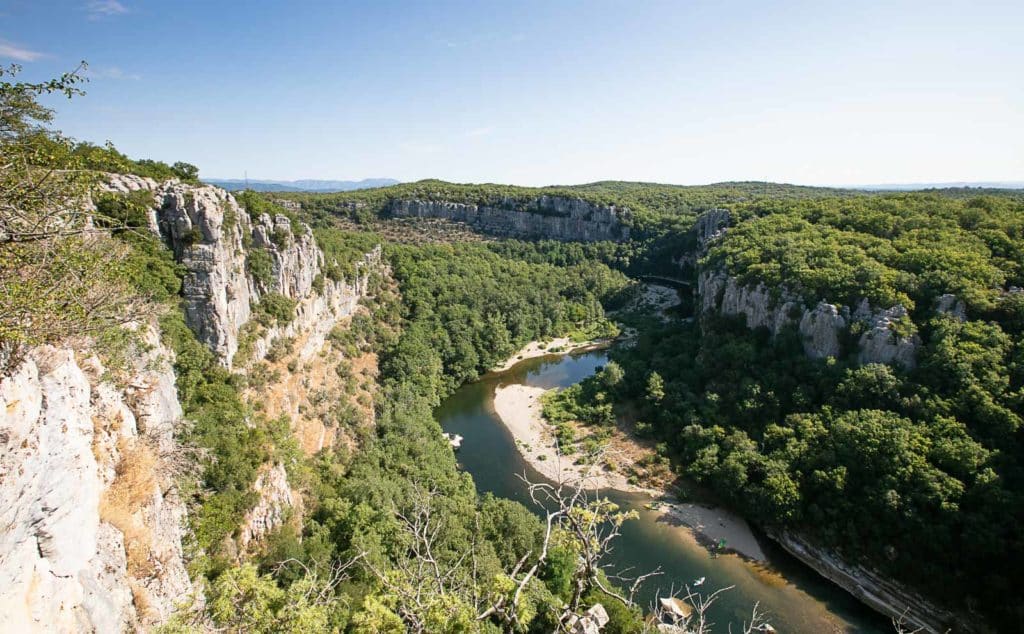
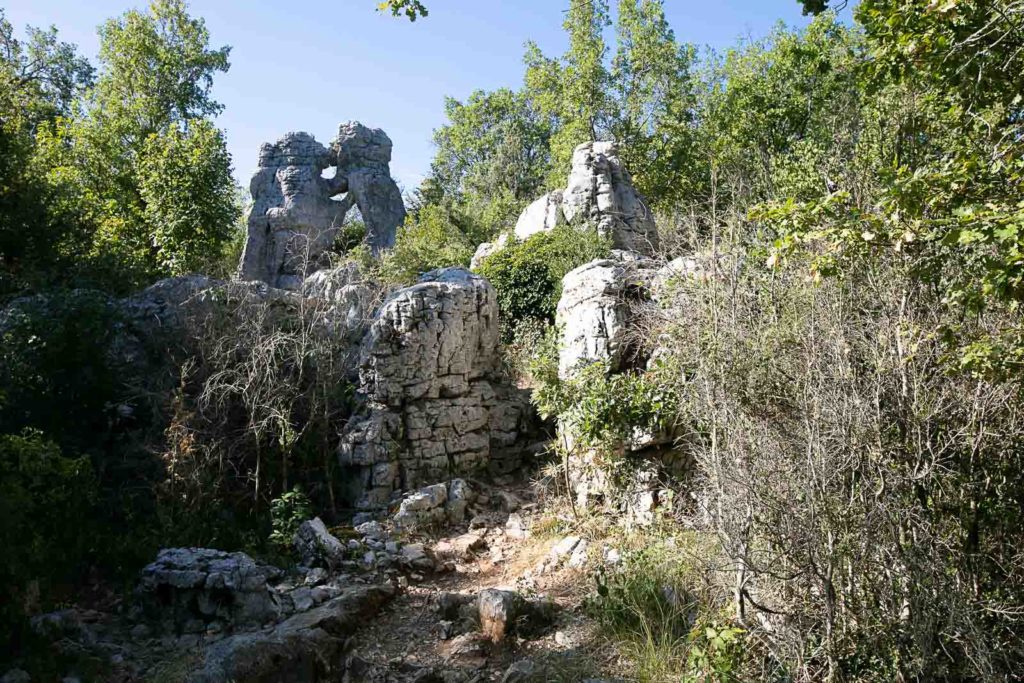
When the Ardèche meets the Massif Central
Further north, as the Mediterranean climate is tinged with the mildness of the Massif Central, the geology of the Ardèche is changing and offering us new landscapes. The vertical minerality of the gorges becomes softer. Water and stone stop fighting and join forces to create green valleys with rounded shapes. Thus, if it is less spectacular, the Eyrieux valley has been better preserved from mass tourism than its neighbours in the south of the Ardèche and possesses the incomparable charm of these small parts of France where time seems to have no hold. You can particularly appreciate a specificity of the Ardèche, the terraces. In order to adapt to a hardly docile relief, villages and cultures have indeed been arranged in terraces. In the spring, you can admire, in the lower part, the fuchsia peach trees that stretch out on the sunny slopes of the valley. As you go up towards the Ardèche mountains, fishing gives way to the great regional speciality, the chestnut. The Ardèche is the largest producer of chestnuts in France, with 60% of the country’s chestnut trees. To be sure of this, just visit Privas, the capital of marron glacé.
Following the Eyrieux through the fields of chestnut trees, you enter the relief of the Ardèche mountains where volcanic activity has strongly marked the landscape as shown by the silhouettes of the Mounts Mézenc and Gerbier de Jonc, strange dried-up mamelons. From the heights of Mount Mézenc, the Montgolfier brothers took off for their first balloon flight. Mount Gerbier de Jonc is famous because it is here that the Loire River rises. In a stable on its slope, many tourists come to drink the water of the nascent Loire. From their bald peaks, you can enjoy beautiful views of the Ardèche mountains. The volcanic activity that gave birth to these mountains also caused the appearance of the Issarlès lake, which enjoys a superb setting.
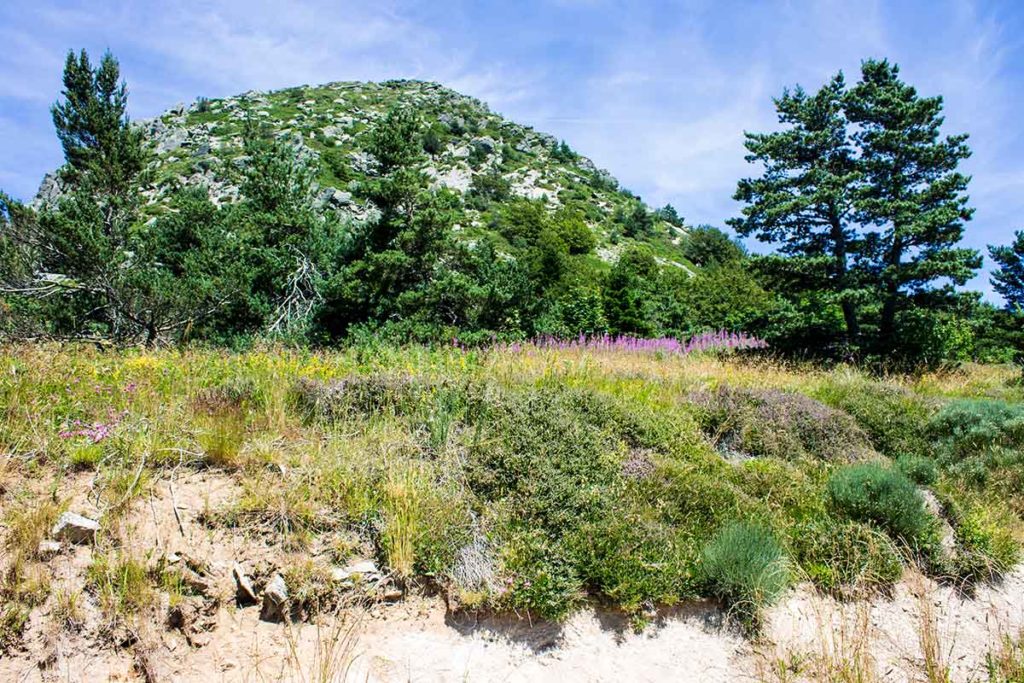
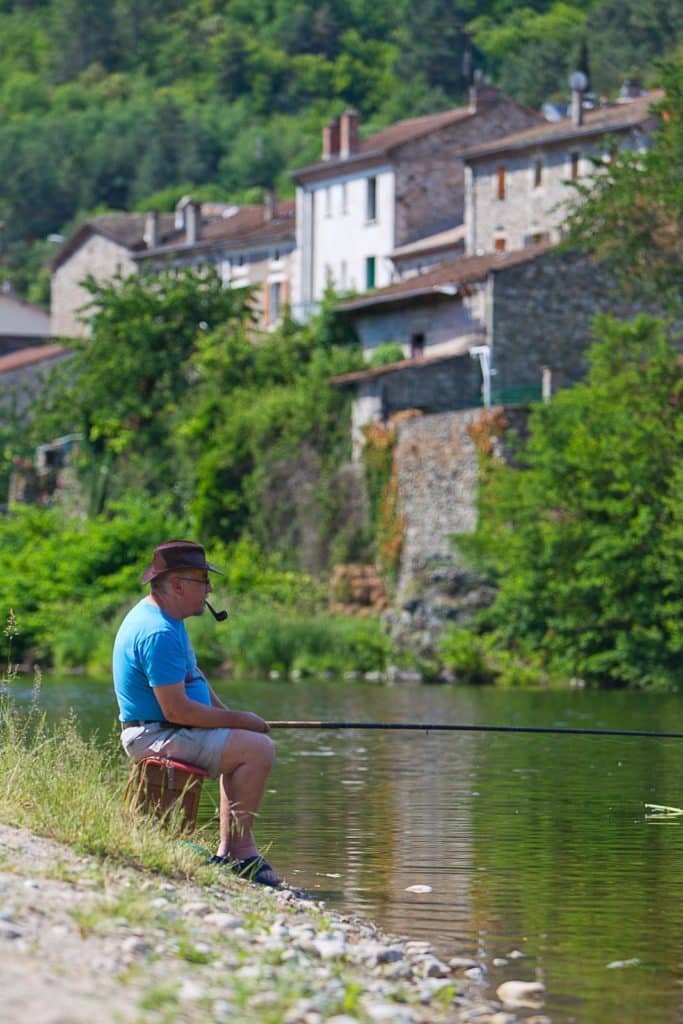

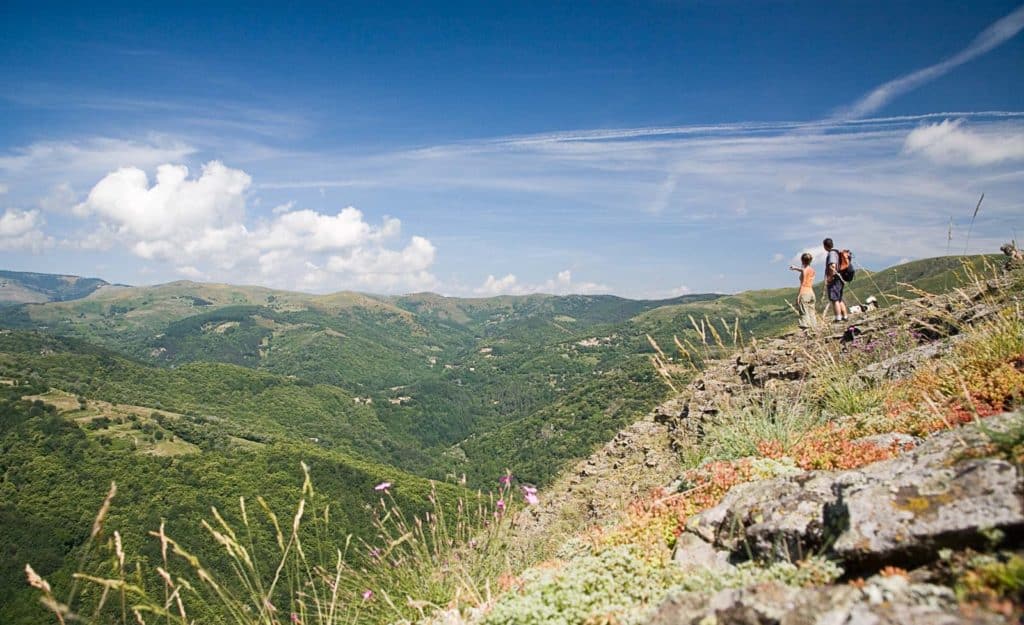
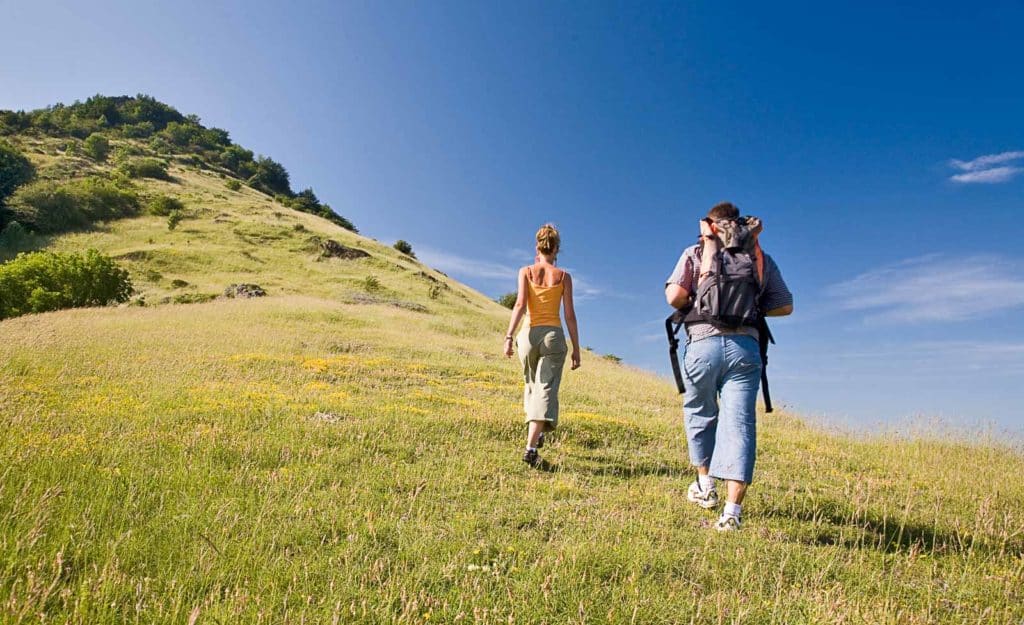
Underground wonders
If the work of water is visible on the surface, the subsoil of the Ardèche also contains its share of treasures. Water has dug caves and avens which have made the region one of the top caving sites in France. However, you don’t have to like to wander through narrow muddy gutters to enjoy the show. The most beautiful of these caves are in fact accessible to the general public. Of all of them, the Aven d’Orgnac is without a doubt the most beautiful and impressive. At 130 metres from the surface, on 30,000 m² and under a 50-metre high ceiling, concretions of more than 20 metres stand out. The spectacle leaves you speechless. And to think that only 3 hectares of the 32 existing hectares are open to the public today. This shows that the Ardèche has not finished surprising us.
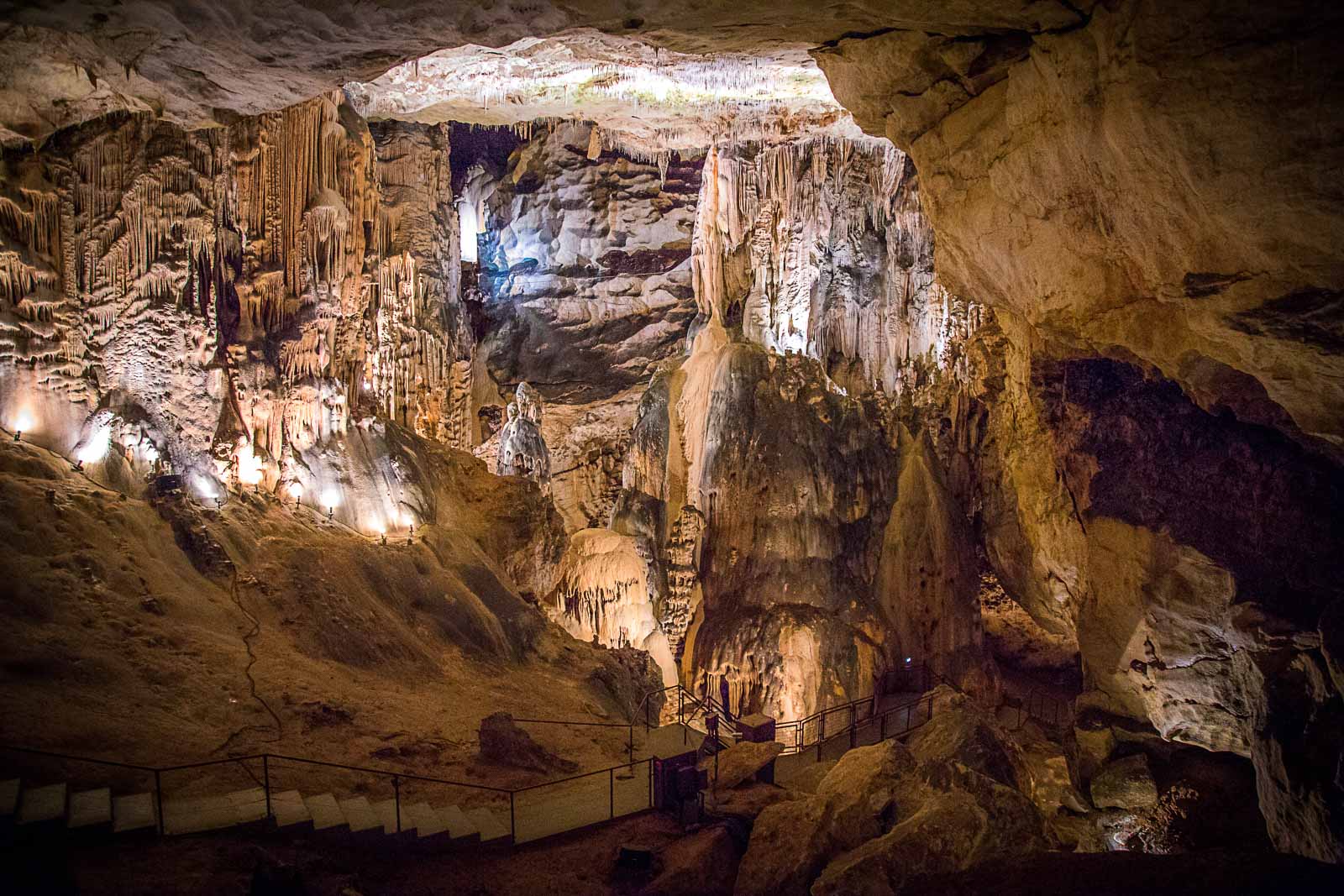
Man and stone
If the action of water on the rock has given the Ardèche its current physiognomy, man has also made his mark. And this since the dawn of time. Indeed, it is considered that the Ardèche caves have been frequented by prehistoric man for 80,000 years. It must be said that the hundreds of caves that go deep into the ground of the Ardèche offered, in these sometimes difficult times, many possibilities of housing for these “cavemen”. The region is also known for its palaeographic wealth. However, it was in 1994 that the Ardèche became known as one of the most important places for cave art with the discovery of the Chauvet cave. It was visited for the first time by Jean-Marie Chauvet and two of his friends, all passionate speleologists. It didn’t take them long to understand the unique dimension of this discovery: the cave paintings that cover the walls of the cave are not only among the oldest in the world, but they impress by the quality of their line, their diversity and the incredible bestiary that they represent. In view of the incredible scientific value of the site, the mistake made in Lascaux in the early years was not repeated here. It was never opened to the public, but a 3000 m² facsimile was inaugurated in 2015. This facsimile is accessible to the public and offers a reproduction of the cave down to the smallest detail (humidity, smells, temperatures, etc.). If you are interested in prehistory, you can extend your visit to the cave with a visit to the Cité de la Préhistoire in Orgnac.
While prehistory is giving way to history, the presence of humans is asserting itself in the Ardèche. The dolmens are proof of this. Thus, despite the displeasure of the Bretons, the Ardèche is the department in France with the most dolmens. However, they are more scattered and there is no megalithic alignment like that of Carnac.
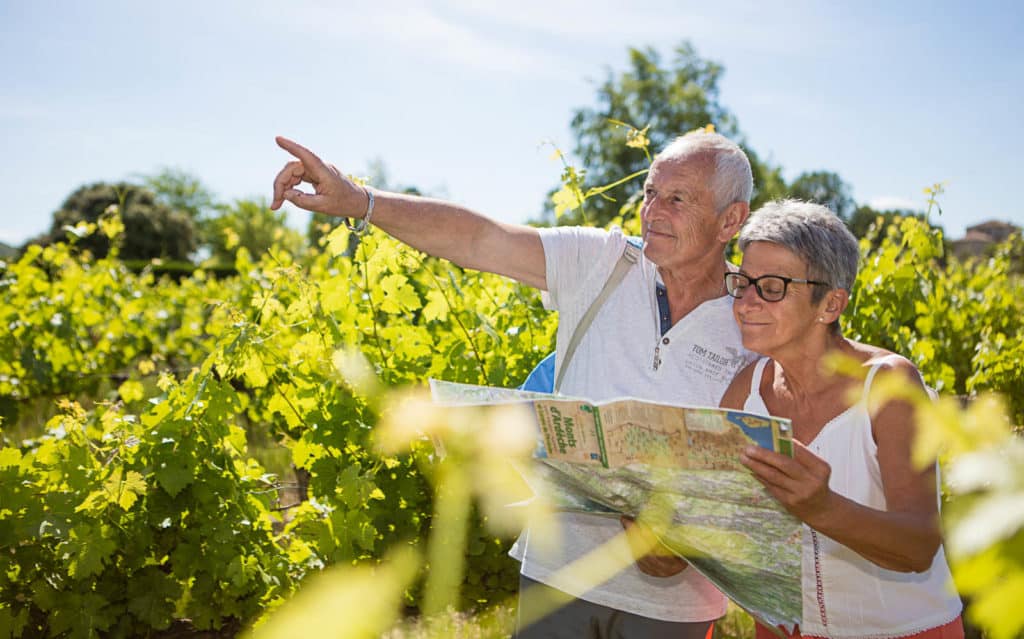
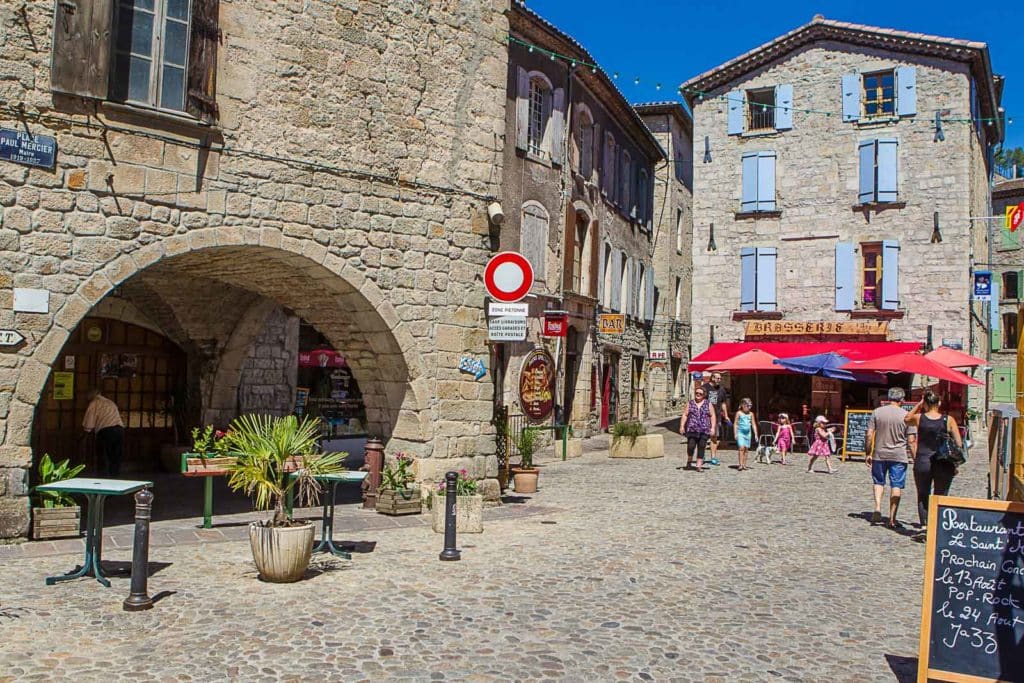
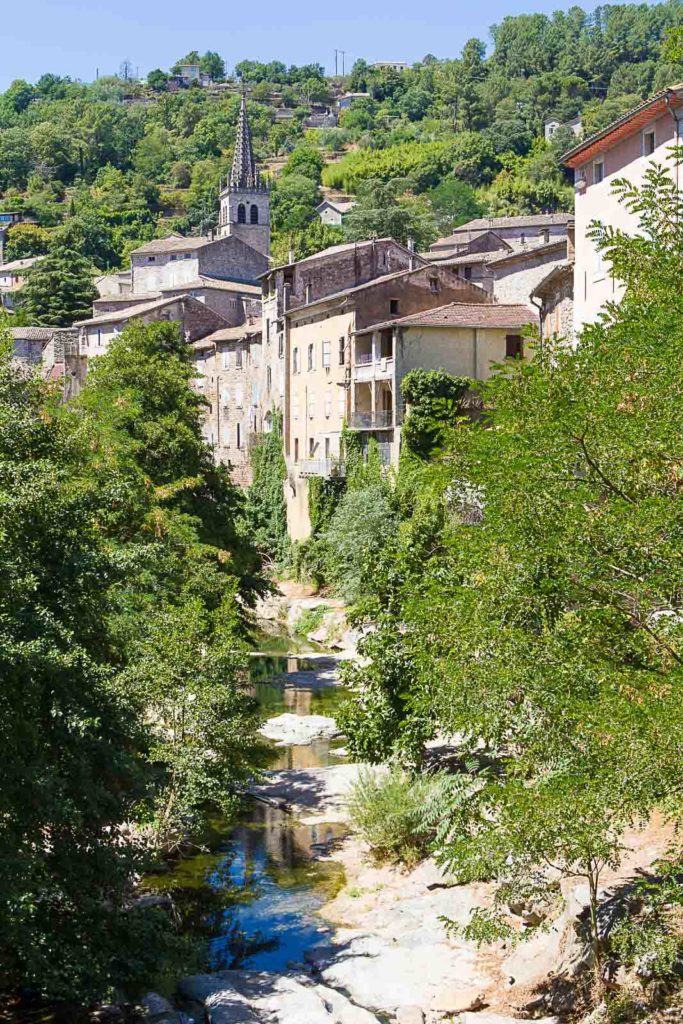
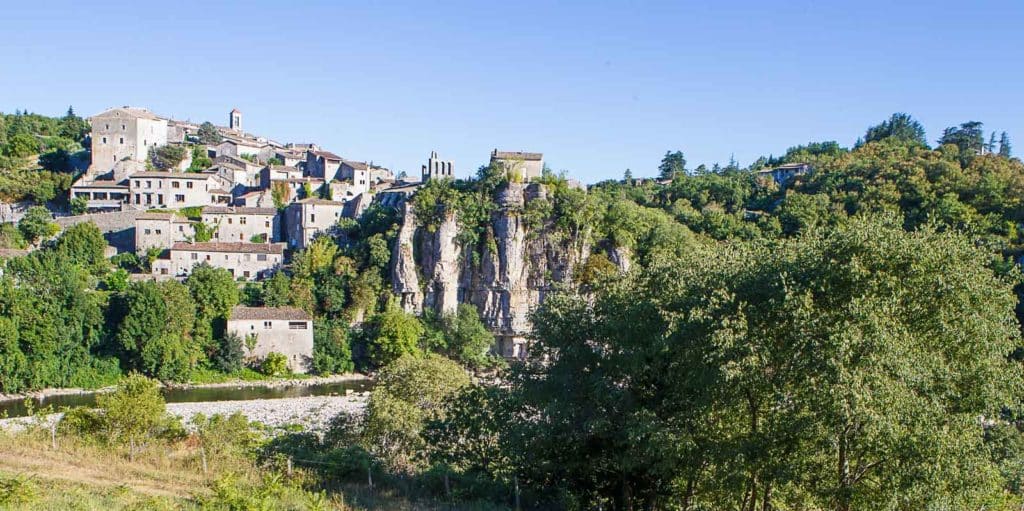

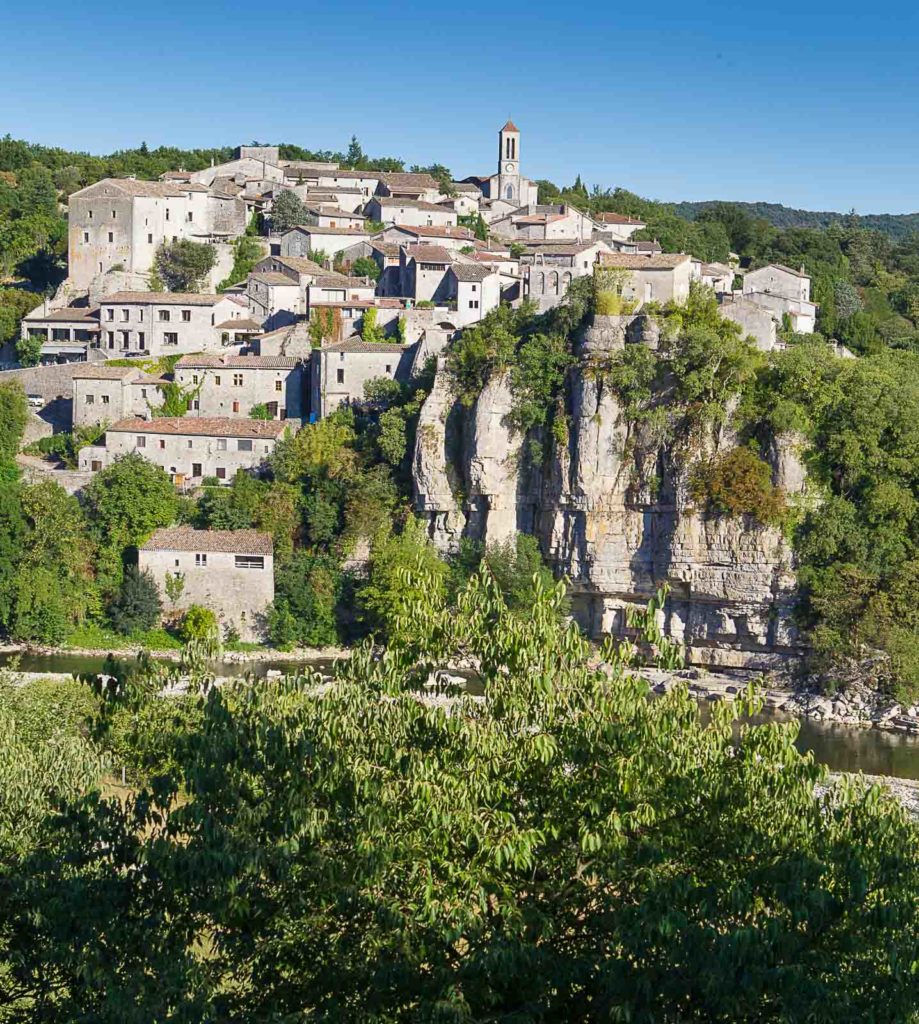
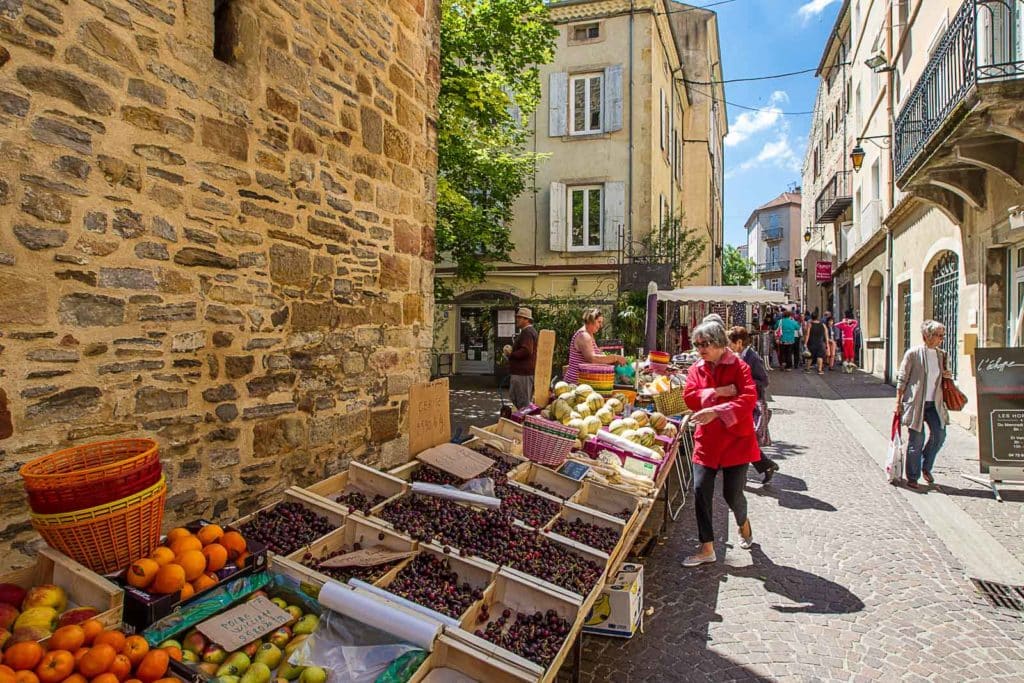
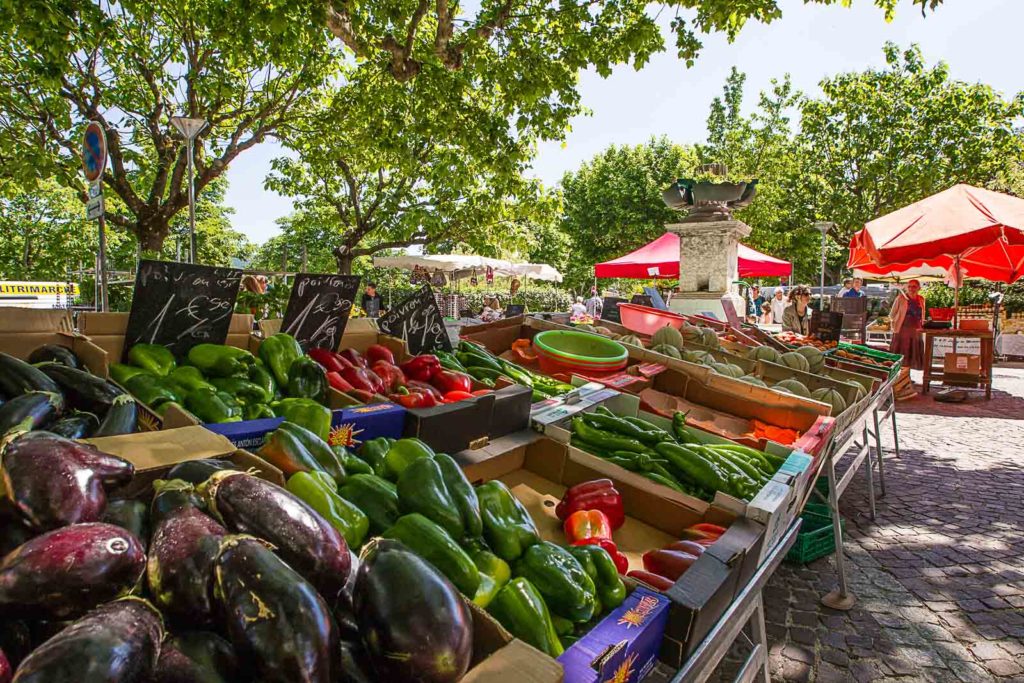
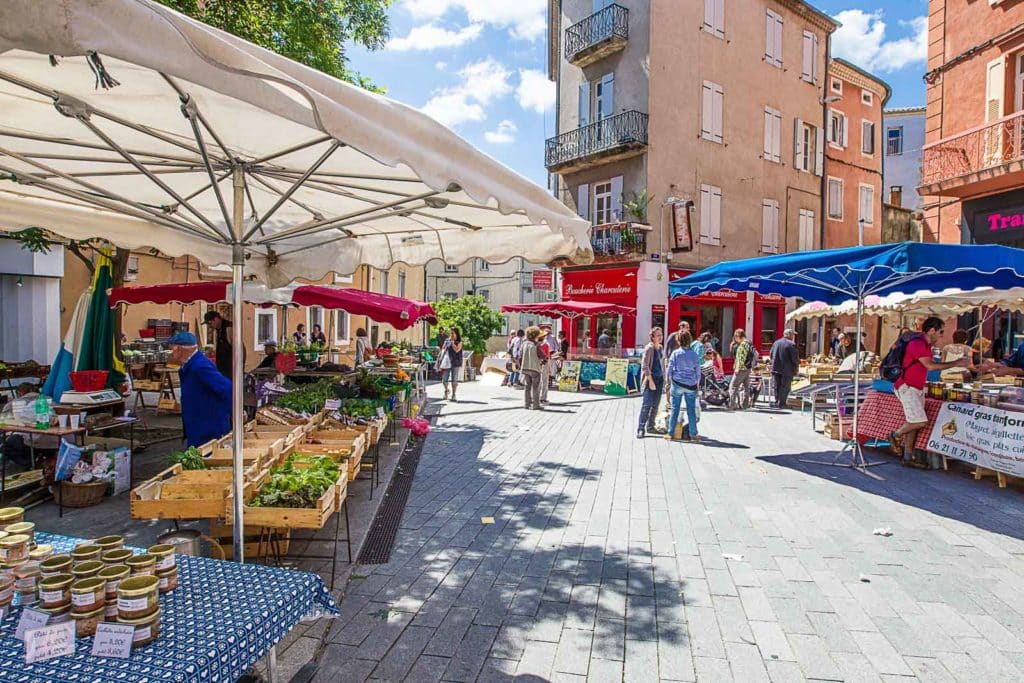
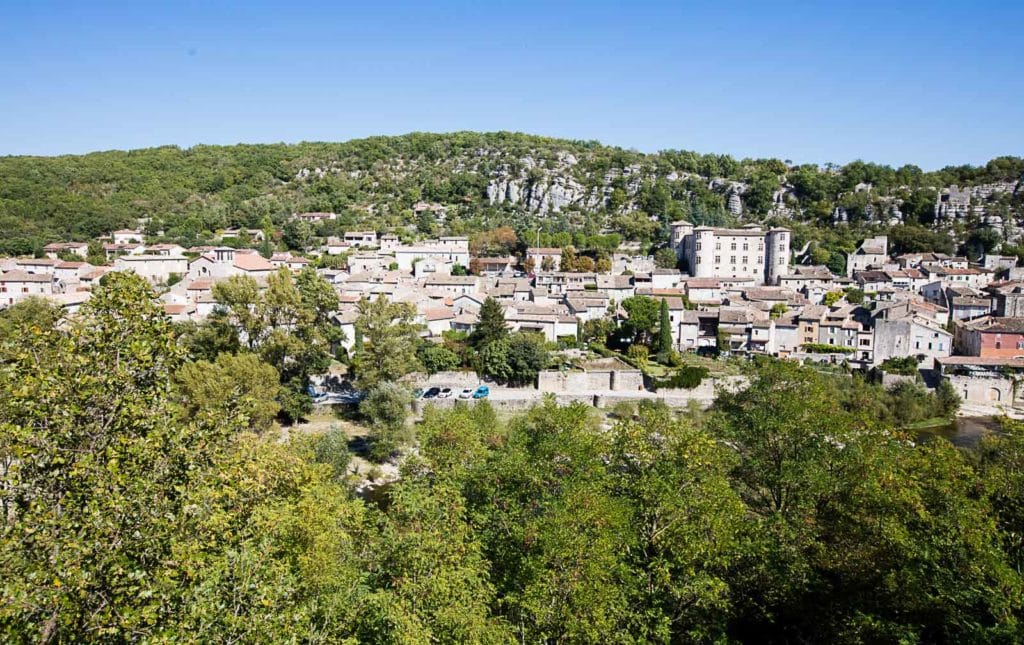
If the caves, the climate and the steepness of the Ardèche seemed perfectly suited to the life of our distant ancestors, this was no longer the case at the dawn of the Middle Ages. The development of towns and agriculture forced people to leave the relief to go down into the valleys. The valleys of the Ardèche came alive with white stone villages perched on the hills or huddled along the rivers. Their narrow streets, lined with houses with lauze or thatched roofs and flowered balconies, tell us the story of a rural Ardèche full of authenticity. Twenty-one of the most beautiful (Chalençon, Beauchastel, Antraigues, etc.) have been grouped together under the name “villages of character”. Of all these villages, some are particularly worth visiting. Balazuc, in particular, is worth a visit. This village is built on the side of a wall above the Ardèche.
Man has also left his mark in the stone of monuments that have stood the test of time. In particular, in the north of the department and in the Vivarais, there are many Romanesque churches which are treasures of medieval architecture which blend in wonderfully with the Ardèche landscape. As well as the castles which are scattered here and there, such as the citadel of Largentière which watches over the fortified town or the fortress of Crussol which dominates the Rhône from the top of its 230 metres.
So make the most of your camping holiday in the Ardèche to discover all its facets.
Our campsites with touring pitches for caravans, tents and motorhomes in the Ardèche
A selection of campsites for holidays in the Ardèche with your caravan, tent or motorhome.



Leave a Reply